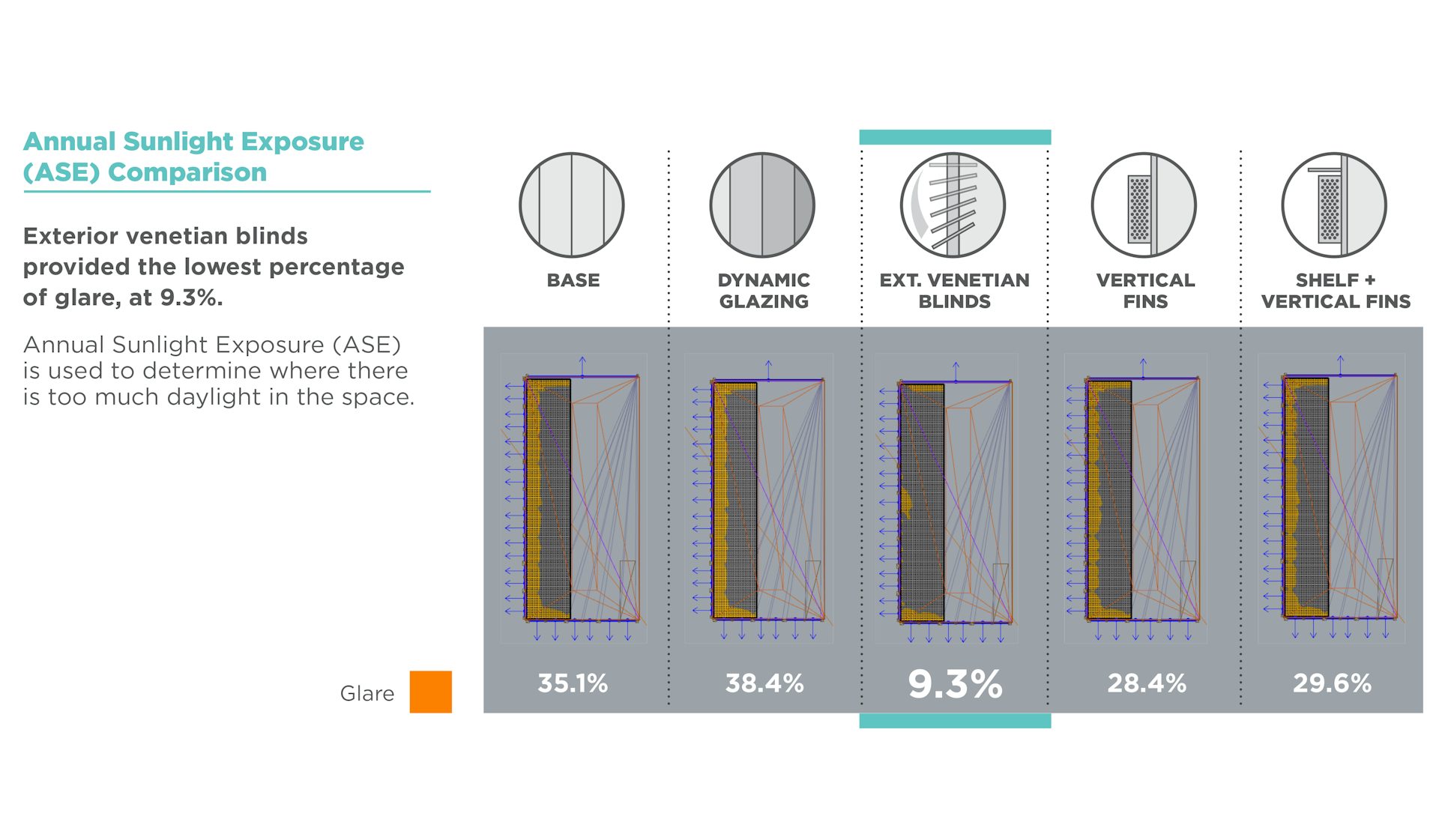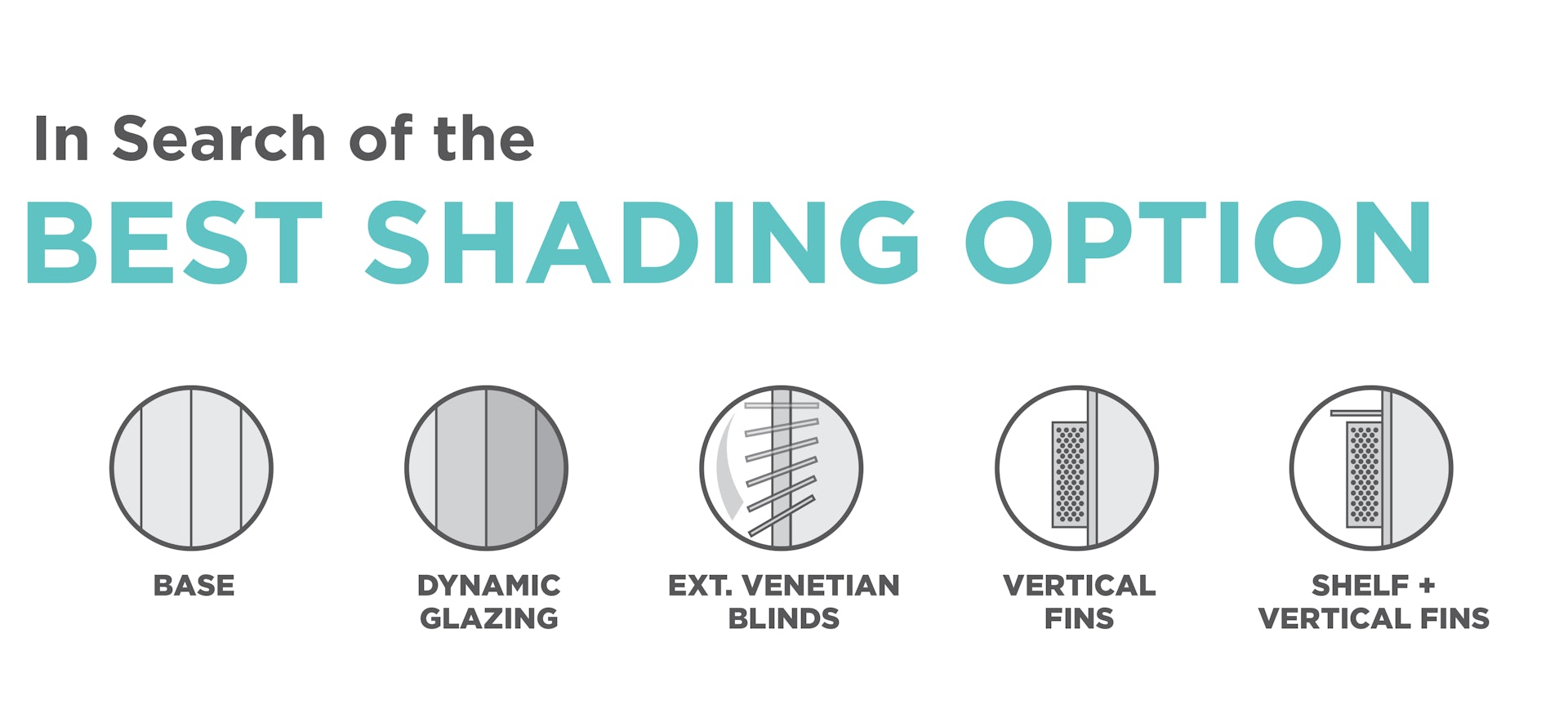Designers studying the façade options for a three-story core-and-shell building in Southern California were able to generate cost sheets and analysis of the different options, but they found little information available to answer a basic question: would one shading strategy significantly reduce energy use in the building?
Working with energy consultant Stok Energy Modelers and DPR Construction, LPA devised a study to examine how the façade shading choices would affect energy performance and daylighting of the building interiors, to help inform a cost-benefit analysis for the shading. Three types of shading solutions were studied—dynamic glazing, exterior venetian blinds and exterior fins. A fourth option, clear glass, provided a baseline for performance and cost comparison.
The shading solution would only be used on the west façade of the building; the south façade was too short to have an impact on the building’s performance. The developer already had a tenant and was looking to maximize energy savings, while addressing the specific needs of the client.
External blinds and dynamic glazing were considered leading options, but it was unclear if either one would dramatically improve the building performance or the comfort level of the occupants.
“We wanted to go above and beyond the fins to study the options that would give us even more of an EUI reduction, as well as improve the interior light quality,” LPA designer Erica Munson says.
The dynamic glazing is electrified and connects to a central control system, tinting darker as the sun becomes more intense. Exterior venetian blinds are solar tracking, and mechanically adjust as the sun moves through the sky. They are perforated to allow occupants to see outside even when fully closed. Fins were added to provide the contrast of a fixed option.
The study was conducted using Climate Studio and reflects data from year-round simulation during daylight hours. The results would be specific to this project, but applicable to other buildings.
In Search of the Best Shading Option
A study of shading options for a three-story project compared the performance of dynamic glazing, exterior venetian blinds and vertical fins.



The study found only minimal performance difference from the options. The baseline EUI of the building is 42.4 using Solarban 72 glass; the best performing approach was the exterior blinds, which produced an EUI of 41.2, compared to 41.3 for vertical fins and 41.6 for dynamic glazing.
But the study explored other elements. Each system was analyzed to determine if it allowed enough daylight into the space. The external shades produced a distinctly better result than the other options, generating a 58.6 percent sDA—spatial daylight autonomy, a metric for measuring the amount of sunlight in the space throughout the day—compared to 41.6 percent for dynamic glazing. The higher the number, the less need there is for electric light.
It became clear that while the systems had a similar reduction to the building’s overall EUI, exterior venetian blinds offered significant increase in comfort level to the occupants. The exterior blinds reduced glare, while allowing daylight deeper into the space. The blinds acted as mini light shelves, reflecting light onto the ceiling, and the blinds are perforated, allowing light in even when fully closed.
The study also examined the annual sunlight exposure, or ASE, which measures if there is too much glare-producing sunlight through the course of the day. Once again, the external shades produced a markedly better result, producing a 9.3 percent ASE, compared to 34.8 percent for the dynamic glazing and 35.1 percent for the clear baseline glass (for ASE, lower is better).
The study found other aesthetic factors that would need to be considered. For example, each section of the dynamic glazing system included a pigtail wire that connects to a centralized control system. Due to the number of lites within each window bay, the mullion size would increase to accommodate those wires.
Ultimately, while many factors will affect a client’s choices, this shading study provided empirical data to help the developer make an informed decision.



